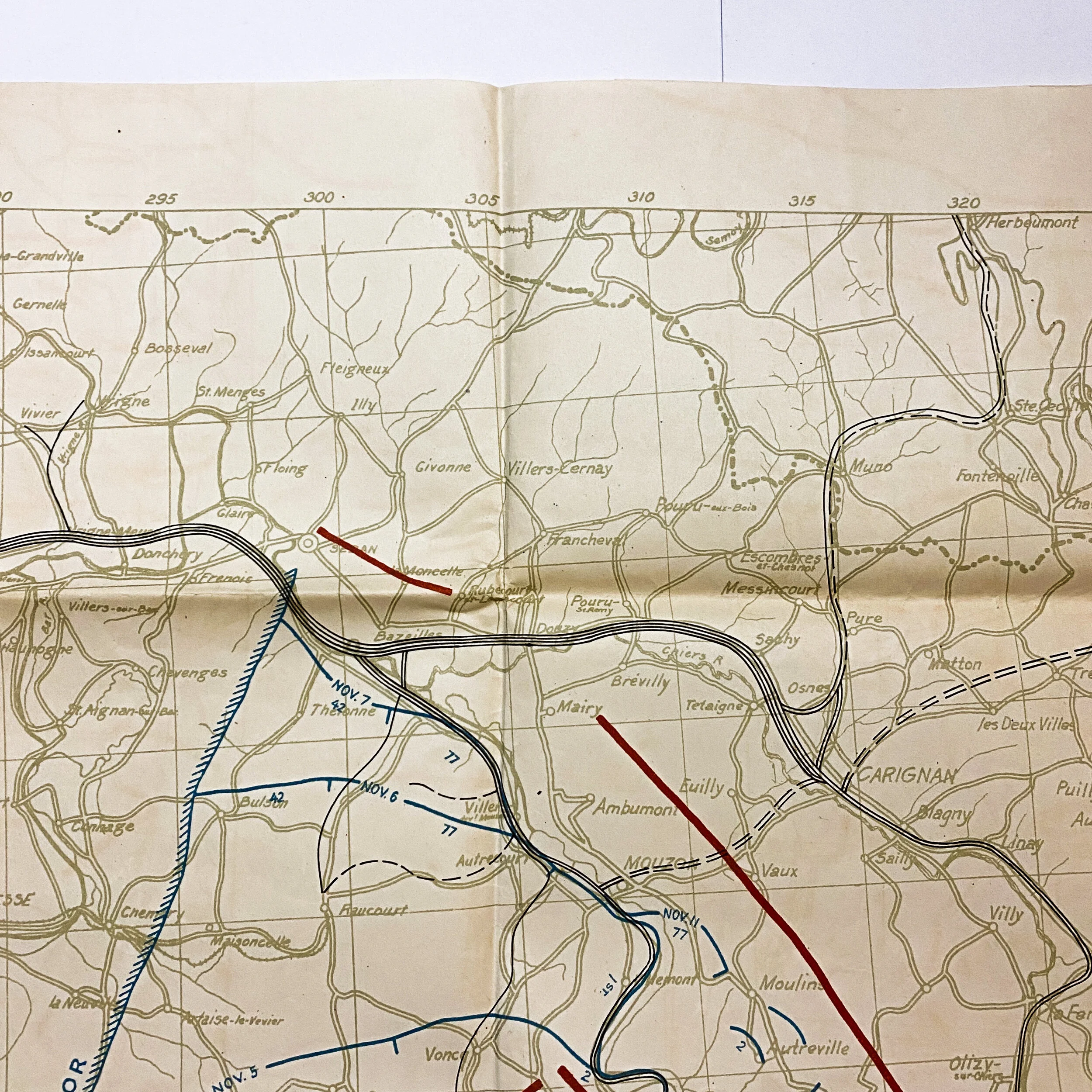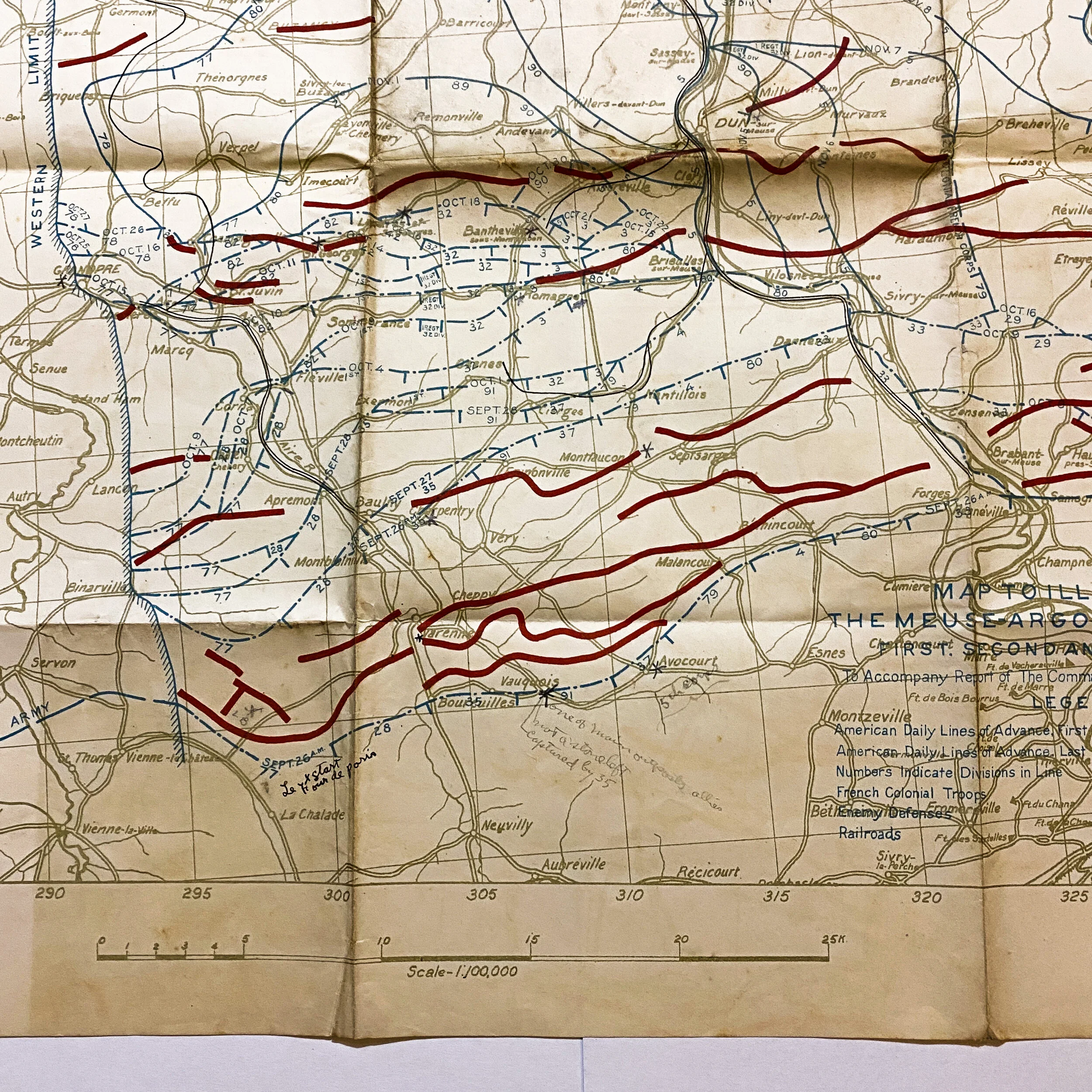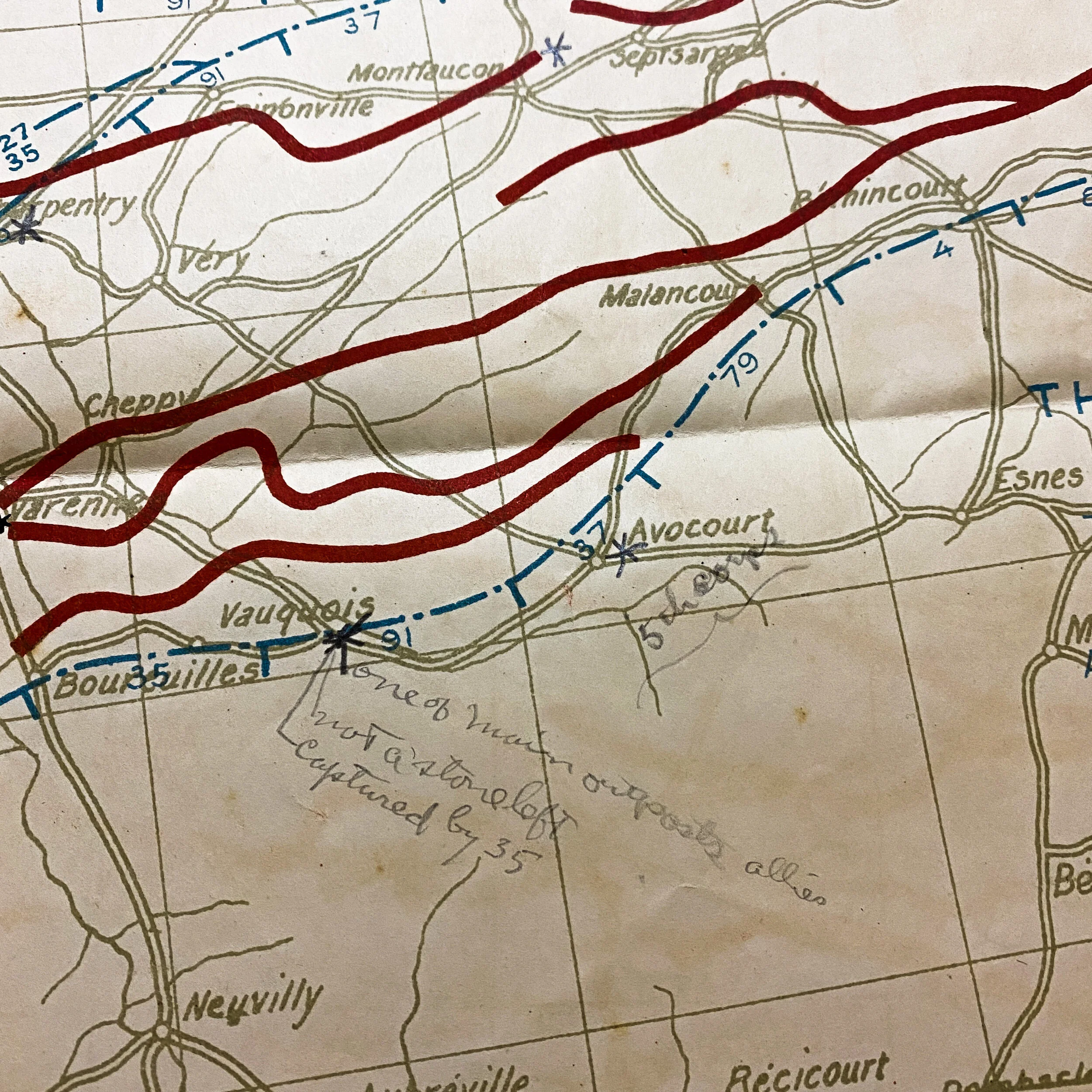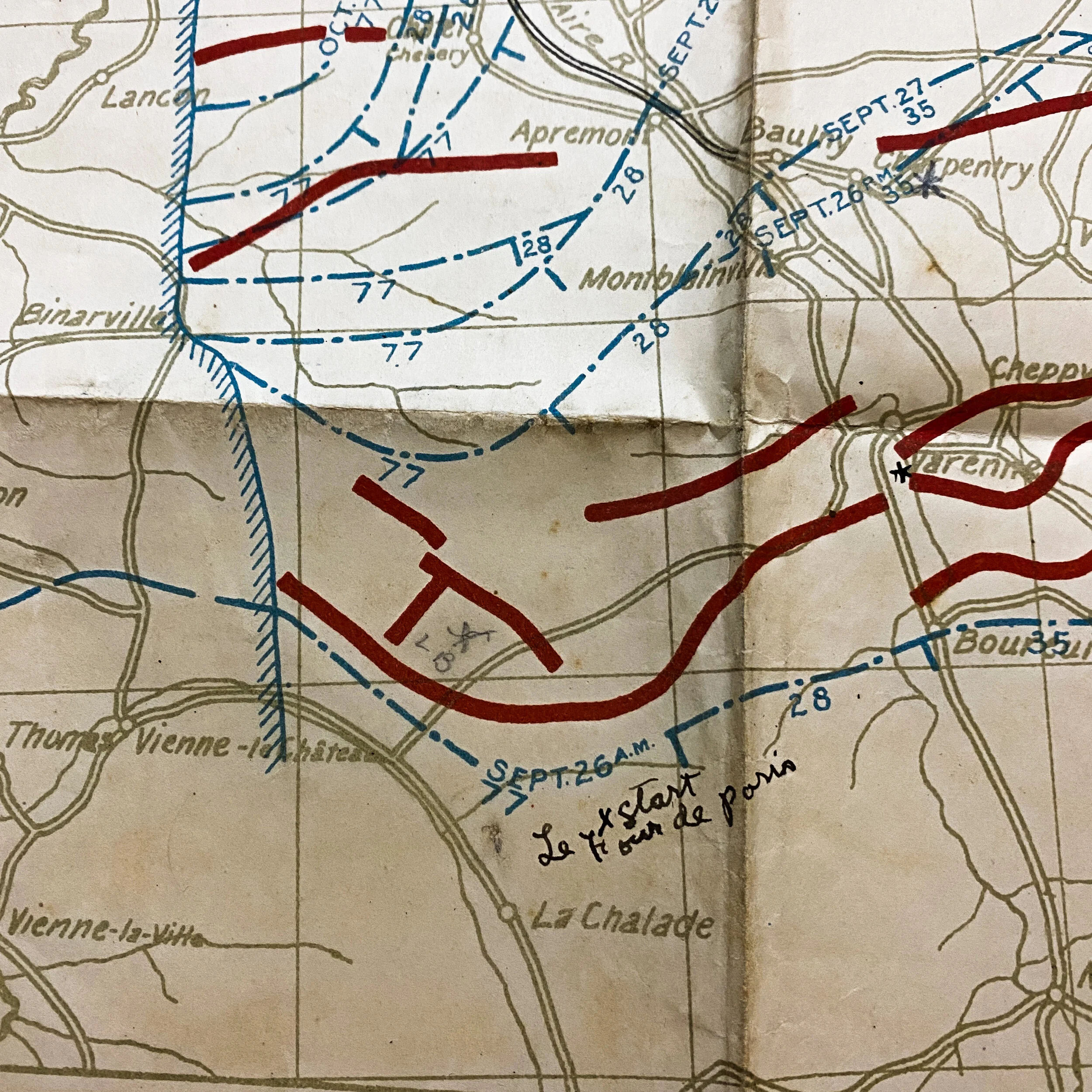1918 Meuse-Argonne Offensive 1st and 2nd Phases Advancement Officers Map














1918 Meuse-Argonne Offensive 1st and 2nd Phases Advancement Officers Map
Size: 32x28 inches
This original World War I map was printed at the base printing plant of the 29th engineers, US Army and is dated 1918. The map illustrates in blue the lines of American daily advances of not only the first, but also the second and last stages of the Argonne offensive. The map also indicates the numbers of divisions in line, as well as French colonial troops and enemy defenses. This map was constructed using observations from biplanes that flew overhead, as well as reports from officers in the frontline. This kind of map would've been used in the war room to plan advances, as well as troop movements on the Meuse-Argonne front.
*This map contains graphite written annotations located near the cities of Vauquois, Avocourt, La Chalade denoting capture dates and headquarter locations of the Allied forces in the area.
Meuse–Argonne Offensive:
The Meuse–Argonne offensive (also known as the Meuse River–Argonne Forest offensive,[6] the Battles of the Meuse–Argonne, and the Meuse–Argonne campaign) was a major part of the final Allied offensive of World War I that stretched along the entire Western Front. It was fought from September 26, 1918, until the Armistice of November 11, 1918, a total of 47 days. The Meuse–Argonne offensive was the largest in United States military history, involving 1.2 million American soldiers. It is the second deadliest battle in American history, resulting in over 350,000 casualties including 28,000 German lives, 26,277 American lives and an unknown number of French lives. U.S. losses were worsened by the inexperience of many of the troops, the tactics used during the early phases of the operation and the widespread onset of the global influenza outbreak called the "Spanish Flu".Meuse–Argonne was the principal engagement of the American Expeditionary Force (AEF) during World War I. It was one of a series of Allied attacks known as the Hundred Days Offensive, which brought the war to an end. It was the largest and bloodiest operation of World War I for the AEF even if, given the scale of other battles on the Western Front, its size was limited and the operation itself secondary as it was far from the main offensive axis.